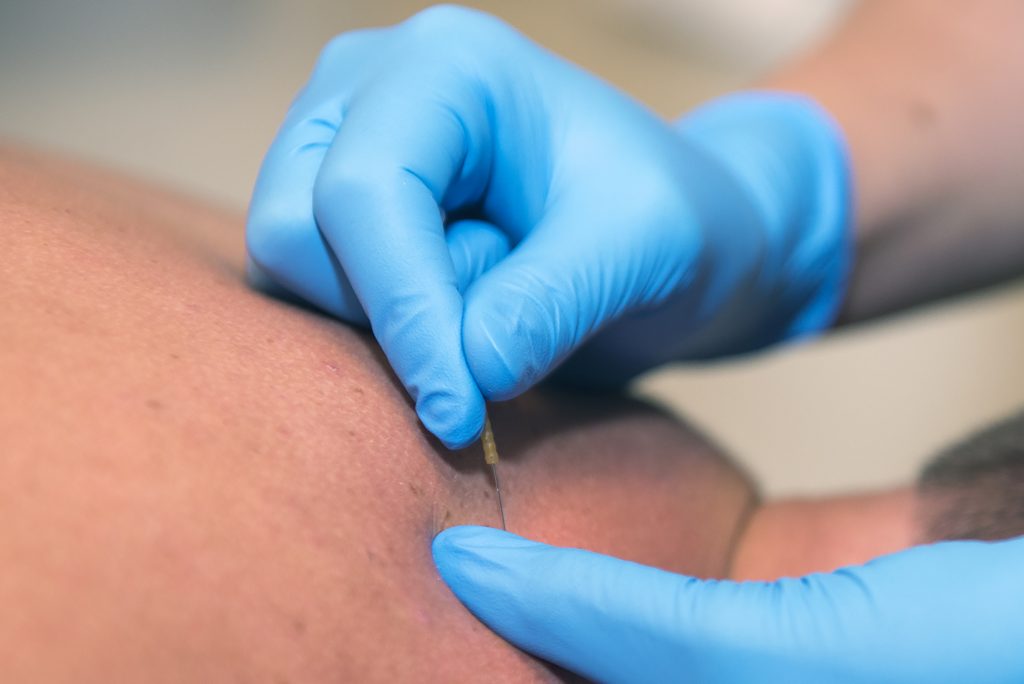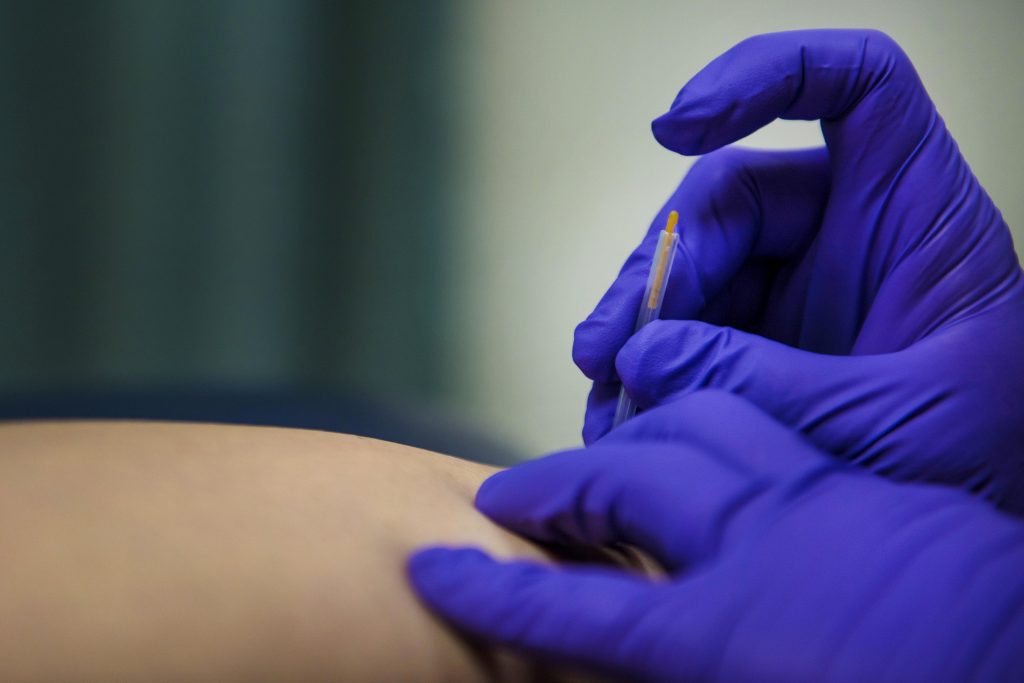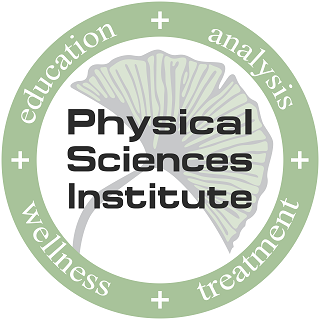Restore Motion and Induce A Healing Response To Your Muscles
Treat your overused muscles, arthritis, repeated muscle injury, nerve irritation, ligament and muscular strain, and herniated discs.
It is an effective treatment strategy in the world of rehabilitation. Athletes use Dry Needling to treat soft tissue and neuromuscular pain and dysfunction.
Needling can assist with muscle pain and inflammation in the body's soft tissues.
- Headaches, Migraines
- Neck/Back Pain
- Shoulder Pain
- Knee Pain
- Hip and Buttock Pain
- Muscular Strains/Ligament Sprains
- Calf Tightness/Spasms
- Hamstrings Strains
- Chronic Pain
- Achilles Tendonitis/Tendonosis
- Tennis/Golfers Elbow
- Sciatica
- Athletic Performance
- Plantar Fasciitis
Repeated muscle injury and muscle overuse could cause Myofascial pain syndrome (MPS). MPS affects the fascia which is the connective tissue that covers the muscles. A myofascial trigger point consists of multiple contraction knots, which are related to the production and maintenance of the pain cycle.

How does Dry Needling work?
The exacts mechanisms of Dry Needling are not known. There are mechanical and biochemical effects. Based on the pioneering studies of Dr. Jay Shah and colleagues at the National Institutes of Health, we know that inserting a needle into trigger points can cause favorable biochemical changes, which assist in reducing pain. It is essential to elicit so-called local twitch responses, which are spinal cord reflexes. Getting local twitch responses with dry needling in the first step in breaking the pain cycle.
What is Trigger Point Dry Needling?
The treatment is the needle effect produced within the muscle tissue. It is a technique used to treat muscle pain and inflammation in the body's soft tissues. This method uses a dry needle, a solid metal filament without any medication. The needle is inserted by hand through the skin into a trigger point aka muscle knot or tense muscle fiber. The result is deep tissue release favorable for the reduction of pain and the increase in muscle movement.

Does Dry Needling hurt?
Most patients do not feel the insertion of the needle.The needle manipulation produces a twitch with the intention to elicit a very brief (less than a second) painful response described as a little electrical shock; others feel it more like a cramping sensation. Again, the therapeutic response occurs with the elicitation of the local twitch responses and that is a good desirable reaction.
Is Dry Needling similar to Acupuncture?
The answer is no. Dry Needling is based on Western medicine principles and research, while acupuncture is based on Traditional Chinese Medicine. The only similarity is in the use of the same type of sterile and disposable solid filament needles. PSI therapists are licensed in (TPDN) Trigger Point Dry Needling through KinetaCore to treat neuromuscular junctions/motor points and stimulate muscles to bring pain relief.
| Common Questions |
| Expected side effects after a treatment | Most patients report being sore after the procedure. The soreness is described as muscle soreness of the area treated and into the areas of referred symptoms. typically the soreness lasts for a few hours up to two days. |
| Steps to do after a treatment | Our recommendations vary depending on the amount of soreness you have and on the individual response to the treatment. Recommendations may include applying heat or ice of the area, gentle stretches, and modifications of activities. |
| When will I start to feel results? | Typically, it takes several visits for a positive reaction to take place. Again, we are trying to cause mechanical and biochemical changes without any pharmacological means. Therefore, we are looking for a cumulative response to achieve a certain threshold after which the pain cycle is disturbed. |
| Why is my doctor not familiar with Dry Needling? | In the US, dry needling is a relatively new method for treating myofascial pain and not everyone is already aware of this effective modality. Feel free to inform your doctor about this treatment option. It is upon all of us to educate others about new innovative ways to treat pain. |
| How does Dry Needling fit in the entire rehabilitation program? | Genearlly speaking, dry needling is the modality of choice when it comes to treating patients in the clinic. More frequently, dry needling is needed in the beginning in order to break the pain cycle. Once that is achieved, other treatment options are introduced. |
| Once I'm feeling better, how often do I need to return to keep my progress? | The musculoskeletal system is under constant pressure from gravity, stress, work, etc. A regular exercise program combined with good posture can prevent many problems. If the pain comes back, tune-ups are recommended to treat and prevent serious injuries. |
